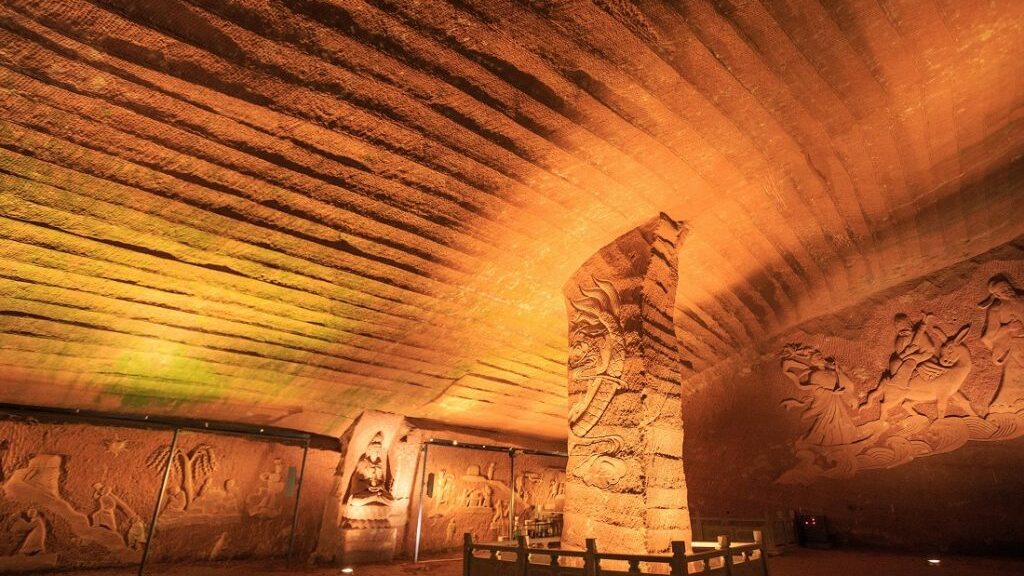Local Farmers found 2,000 years old carved caves while pumping water out of five small pools
The caves are one of the largest structures ever excavated by human hands. First discovered in 1992, 24 caves have been found to date, one of which has been developed as a tourist attraction.
Interestingly, to date, not a single historical record has been found that details or explains the monumental construction process that involved the removal of more than 1,000,000 cubic meters of rock.
These caves have become a mystery to many people trying to figure out how builders in the past were able to carve out these gigantic caverns and leave such unique tool marks on the surface of its walls.

The mysterious tool marks found in the Longyou Caves have baffled scientists since their discovery. Scientists from around the world wonder how the caves have been able to keep their structural integrity for such a long time. And then there is the question of those tool marks.
The Lonyou Caves mystery

What really makes these caves so mysterious and what is so special about their tool marks?
Modern-day high-tech machines dig away stone and grind down the walls and ceilings in mines and quarries.
But when we discover the same types of tool marks in caves that date back far beyond the time of any formally recorded technology capable of even remotely producing any similar marks on stone surfaces, most of us can’t help but scratch our heads.
How did people in remote history manage to carve out these caverns leaving tool marks that only find their likeness in modern mining operations?
The elephant in the room
Mainstream academia generally believes that people in the remote past were mostly simple dwellers and technologically primitive compared to people today. According to academia, the evolution of technology went from primitive (in the past) to more advanced (today).
If what the tool marks in the caves suggest is confirmed, then the aforementioned assumption would be turned on its head.
While this hypothesis is an accepted theory in the field of academics, sites like the Lonyou Grotto in China put mainstream theories about what ancient people were capable of under scrutiny.
Longyou Caves and history
According to historians, the caves were created in the Qin Dynasty, 212 BCE; however, there is no historical record of their construction. The caves were first discovered in 1992. So far, 24 caverns have been discovered, one of which has been transformed into a tourist attraction.
Mainstream historians believe that the Lingyou Caves were carved out of the massive stone by hand. Each cave has a volume of several thousand cubic meters. Apparently, the ancient builders did it all by hand, with hammers and chisels.
But they didn’t chisel any simple way. The builders apparently chiseled the walls and ceilings in a way that left a uniform pattern.
A different paradigm
When deriving conclusions within a framework of fixed notions and the chronology of events, it is difficult to ascribe perfectly aligned tool marks to the crude hammer and chisel work done by people of ancient times.
While it seems plausible to people who just consume information and do not critically think about what is said, those who do some research will find it hard to reason the facts surrounding the Longyou Caves using mainstream explanations.
To truly understand and properly analyze the caves and similar structures, you will need to be able to literally “think outside of the box.” You must be ready to constantly change your previous notions and reconsider prevailing hypotheses and theories in the light of new facts and artefacts surfacing.
It is, however, understandably difficult for any academic to throw away theories that they spent almost a decade studying and on which they have based their entire academic careers.


